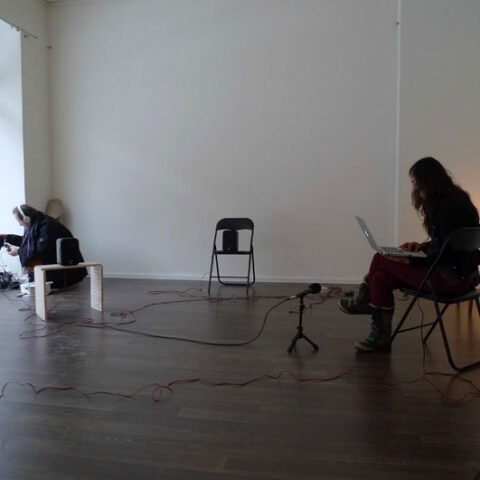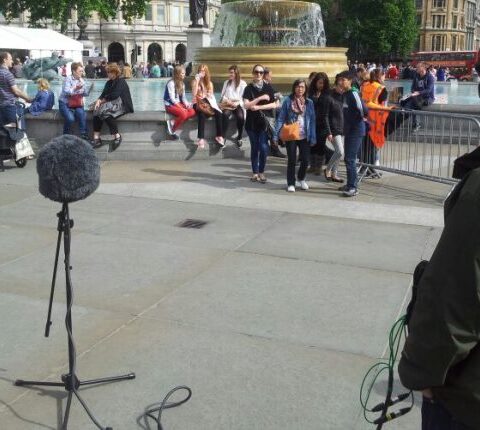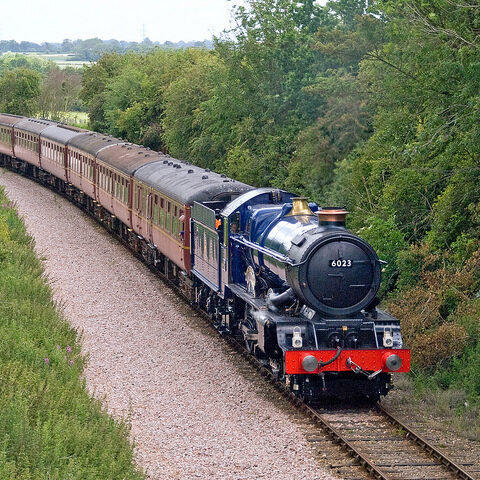[Article written by Watson Wu, a composer, sound designer and field recordist]
Warning! Do not attempt any of the following techniques on your own. Always seek professional help when working with weapons and explosives!
I was recently contracted by two separate European companies to record various firearms and explosions. Sonokinetic, an exceptional sound library company, had a large wish list of firing and foley recordings of machine guns and a variety of other weapons. The other was an undisclosed video game company who requested various sniper rifles, high power pistols, and explosions. Because these companies have no legal access to weapons in Europe, they contacted my US-based studio to record, edit and mix for their products. The state of Florida allows for ownership and the shooting of a wider range of weapons than other states and, in fact, through proper licenses there are only certain states in the US where can you legally own and shoot machine guns and explosives.
After receiving the cue lists, I called my numerous gun contacts for their availability. Interestingly, when I first got into firearm recording many years ago, I found many of these people were very difficult to network with unless you were given an introduction, and were a gun owner (which I am). Serious gun owners are often very private about what they possess. One weapons crew I had previously hired has a very keen sense of sound and actually recommended certain hardware which they brought to the session. Once each weapon and the amount of ammunition were agreed upon, I rented a shooting range which allowed for all of our weapons, including machine guns. This 300-acre, private outdoor range is located practically in the middle of nowhere and is perfect for uninterrupted field recordings.
One of the biggest logistical challenges of weapons and explosions recordings is planning the budget. Machine guns are quite often expensive to record because these weapons cost from $8,000 and up. I have encountered multiple guns costing far more than $20,000 each! Moreover, the amount of ammo is sometimes the unknown until you actually get into the sessions. Will the weapons jam and cost more ammo for the retakes? It is common for us to pay over $1,000 per day for ammo because the speed of which the machine guns fire off an entire magazine of 30 rounds is less than 4 seconds. Depending on which machine gun I am recording, it may take only a few minutes to run out of ammo.

As expected before the sessions, I rented both extra long XLR microphone cables as well as a long snake – since owning every piece of gear is often a waste of space and money for the studio. With my unlimited access to the range, I setup the field recording gear where the shooters typically sit. The weapons handlers were stationed 70 and 100 feet in front of me for close and distant perspective recordings. Shooters stood on blankets which were used to reduce foot scuffs and catch the empty ammo casings. I used an assortment of microphones including Sennheiser, Neumann, DPA, Rode, EV, and Audix brands along with blimps and furs to counter wind noise. We found that using a different combination of mics work better (or sound better) with different types of firearms so a wide variety was essential. The primary recorder was a Sound Devices 702 and other devices were brought along as secret weapons for further successful sessions.
Since I often field record in the middle of nowhere, I am always fully prepared with a load of rechargeable and regular batteries and plenty of high capacity memory cards for me to “over record”. (I use the term “over record” as in whenever you hit “STOP”, immediately hit “RECORD” so you won’t miss that once in a lifetime take.) It doesn’t matter if you have 5 or 30 minutes of silence; you have no excuse missing a take with the available low priced batteries, memory cards, hard drives, and fast computer processors we have today!

Working alone is my typical approach but there are times like these when extra help is needed. For these sessions, I hired an assistant who also happens to own a variety of firearms. It’s extremely important when recording firearms to understand and constantly apply gun safety and the advantage we had for these sessions is that all of us are experts. To ensure we were all aware of what was happening, my station had access to a built-in PA system where I announced when the range was hot, ear protection warnings and when shooting was complete. Balancing constant communication and ear protection was equally important and we all used special battery operated ear muffs by Howard Leight. These particular headsets allowed us to hear normal speech while automatically sensing and dampening loud gun sounds. From my recording position I used the Remote Audio HN-7506 headsets which are a must for all of the loud recording sessions I typically do with guns, race cars, tanks, aircrafts, and screaming animals.
For the explosion recording session, I had to bring in more experts and secured a much larger piece of land of over 1,500 acres. Instead of using measuring tapes we brought special range-finding binoculars that with a push of a button, displayed how many yards we were from the target. We initially tested the microphone positions at around 80 yards from the explosives then moved in closer after each of the takes. At the satisfying distance of 50 yards, we started mixing in different types of gun powder and gasoline. After applying these materials the sound went from small puffs to large KA-BOOM’s! At one point the hill where we set off the explosives actually caught fire, prompting us to react quickly to put it out. (This does happen, even with professionals!) Fortunately we pre-planned and placed the explosives near a small pond which was used, along with various other tools, to put out the fire.
After each of the sessions I transfer the recorded data to my laptop and an external hard drive. To maximize time and efficiency, this procedure is often done during our end of the day cleanup. It is in my studios for many days where I edit and beef up all of the recorded sounds using a few audio plugins, EQs, and other mix techniques. At the end of all this, hundreds of files in many variations were uploaded to my ftp servers for both clients.







